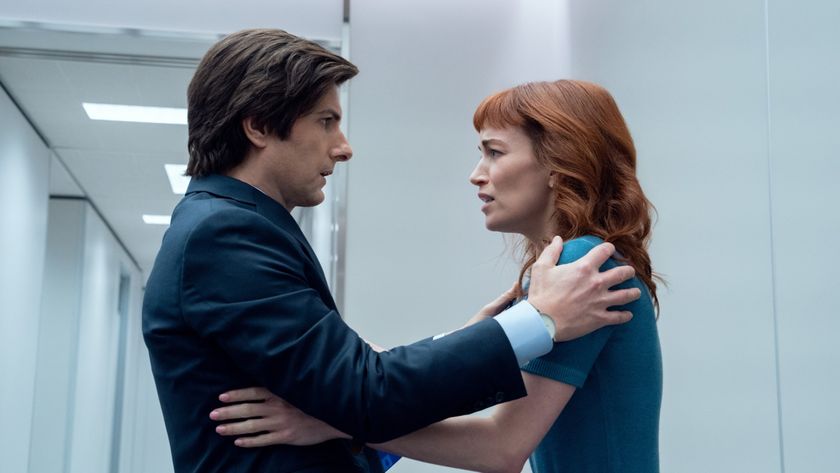Every Star Trek Discovery Easter egg and hidden reference you might have missed
Impress your friends with every Star Trek Discovery Easter egg from season 2 so far
Here comes the science bit
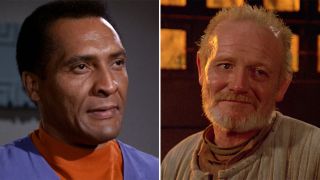
Wow, that Paul Stamets is a grouch. It’s understandable though - he and his research partner on the U.S.S. Glenn were in line to win the Zee-Magnees Prize for their work before the war broke out and thwarted their dreams.
The Zee-Magnees is a highly prestigious award given to people who help significantly advance the Federation. In the original series, that was Dr Richard Daystrom in The Ultimate Computer, and in The Next Generation it goes to Dr. Ira Graves, for his his advances in cybernetics, in The Schizoid Man.
Speaking of Stamets, he’s named after a real life mycologist of the same name. He can be found online at @paulstamets.
Section 31
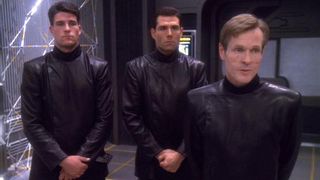
Black Starfleet badges? A shady off-books operation? A Captain keeping deadly secrets from his crew? Is the Discovery a Section 31 starship?
For the uninitiated, Section 31 is Starfleet’s black-ops unit. Introduced in the Deep Space 9 episode Inquistion, the shady unit is responsible for many clandestine activities designed to keep the Federation safe - whatever the cost.
Although his affiliation isn’t called out by name, the Section 31 operative Harris appears in several Enterprise episodes, while in the Kelvin timeline the agency operates from the building in London that John Harrison (AKA Khaaaaaaaaaan!) destroys.
Intriguingly, the Discovery’s registration number is NCC 1031, though it’s worth remembering that its sister ship, the Glenn had the number NCC 1030, so there’s likely no significance there. Rather than being a dedicated Section 31 ship, it seems more likely that the Discovery really is a science vessel that has been conscripted into the war effort.
Sign up to the SFX Newsletter
Get sneak previews, exclusive competitions and details of special events each month!
Tube talk
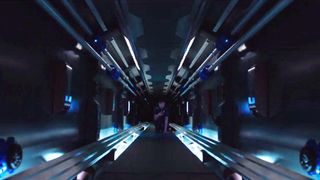
It wouldn’t be Star Trek without a Jefferies Tube. These are the internal tunnels used for maintenance on starships (and for rushing around in when the lifts are out of action). They were introduced in the original series and have appeared in every iteration of Star Trek since.
Why “Jefferies”? The in-universe explanation is that they are named in honour of Starfleet engineer W.M. Jefferies, one of the designers of the pioneering NX-class starships. In reality, that character was named after Matt Jefferies, the original series’ Art Director and the man who designed the original starship Enterprise.
Mother and brother
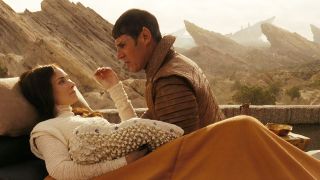
Burnham gives her first acknowledgment of her foster mother on Vulcan, Amanda Grayson.
A well-known character in Trek lore, and Sarek’s human wife, Amanda was played by Jane Wyatt in the original series and Star Trek IV: The Voyage Home and voiced by Majel Barrett in the animated series. In the Kelvin timeline of the JJ Abrams movies she’s played by Winona Ryder, and killed when Vulcan is destroyed.
We’ll be seeing more of Amanda later this season, now played by Mia Kirshner. Of course, the big tease in this sequence is an offhand reference to a certain green-blooded Vulcan. “My foster mother on Vulcan used to read it [Alice’s Adventures in Wonderland] to me and her son.” Yep, that’s Spock she’s talking about. Will we get to see him too?
The Alice in Wonderland reference here, incidentally, is a call-back to the animated series, where it’s stated that Amanda was a fan of the book in the episode Once Upon a Planet. “Light reading is considered relaxing, Captain,” says Spock. “My mother was particularly fond of Lewis Carroll’s work.”
Alpha, Beta, Gamma, Delta
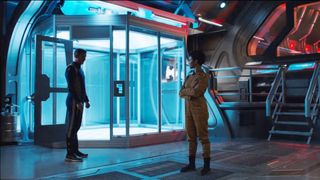
At the end of the episode, Lorca tells Burnham about the mycelial network that Starfleet is attempting to harness. He states that the U.S.S. Glenn was “travelling back and forth to the Beta Quadrant, 90 light years away, in 1.3 seconds”.
In Star Trek, the Milky Way galaxy is divided into four quadrants. Earth is in the Alpha Quadrant, as is Bajor and Cardassia Prime; Romulas and Qo’noS are in the Beta Quadrant; the Gamma Quadrant is the far-off sector of the galaxy that the Bajoran wormhole in Deep Space 9 links to; and the Delta Quadrant is where the lost U.S.S. Voyager finds itself.
Dates of future past
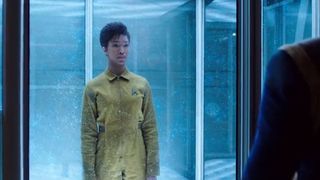
When Burnham confronts Lorca about his supposed development of a spore-based biological weapon, she states that it is “explicitly forbidden by the Geneva Protocols of 1928 and 2155”.
Why the latter year? Well, in Enterprise’s two-parter Demons and Terra Prime, it’s established that this is the year that the idea of forming a Coalition of Planets was first mooted. That same coalition would become the Federation. Not using such weaponry, then, is one of the organisation’s founding principles.
Lorca's guide to the galaxy
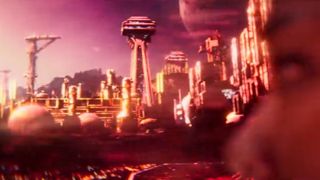
Lorca exposes Burnham to the spores at the end of the episode and she goes on a trip to various corners of the galaxy in a scene that’s a treasure trove of references to the original series.
Aside from a quick glimpse of Romulus, we also see the moons of Andoria and the Preserver Obelisk that Kirk will stumble upon in The Paradise Syndrome; a shot of Starbase 11 from Court Martial and The Menagerie; and the Janus VI colony from all-time-classic, The Devil in the Dark.
Most intriguingly, Lorca refers to Ilari and shows some ruins on a darkened world. Ilari is a planet in the Delta Quadrant that featured in the Voyager episode Warlord. That suggests either there’s a planet closer to home with the same name - or that the spores are capable of taking starships far further than the Beta Quadrant...
Gorn fishing
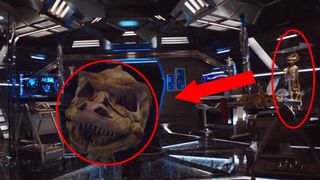
As we see in the final scene, Lorca has quite the collection of alien creatures, including the skeleton of a Gorn - the reptilian alien species that Captain Kirk goes hand-to-hand with in Arena. The Federation haven’t yet made contact with the species in Discovery’s time, though there’s no reason why Lorca or his team couldn’t have stumbled upon the remains of a dead one and been intrigued enough to collect it. Elsewhere in his menagerie are the remains of some Cardassian voles.
Episode 2
Ready, steady... pause!
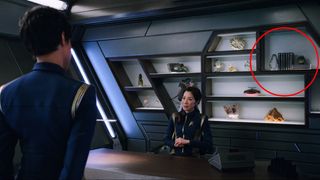
Captain Georgiou’s ready room seems to have been designed with Blu-ray zooming in mind. Squint and you may notice a bottle of wine from Chateau Picard. While there is, in fact, a real vineyard of that name, it’s also well-established in Trek canon that future Enterprise Captain Jean Luc Picard comes from a family of winemakers. The bottle that Georgiou owns is from 2267 - a vintage year, no doubt, but also a problematic one given that the first episode of Discovery takes place 11 years earlier in 2256… There must have been a disruption in the time-space continuum.
Also of interest is Georgiou’s shelves which contain a row of books, the titles of which will be familiar to fans: Mirror, Mirror, Plato’s Stepchildren, The City on the Edge of Forever, Amok Time, and many more. Yep, they’re all names of original series episodes.
Orders are orders
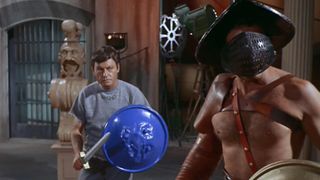
Did you spot Georgiou’s reference to “General Order 1”? That’s better known to fans as the Prime Directive - i.e. Starfleet’s most important principle. “No starship may interfere with the normal development of any alien life or society,” introduced in 1968's Bread and Circuses. It’s this principle that forbids Starfleet officers from using their great power and technology to alter civilisations - something that Klingon zealot T’Kuvma is clearly concerned about.
Continue to Page 14 for more Star Trek Discovery Easter eggs

Will Salmon is the Comics Editor for GamesRadar/Newsarama. He has been writing about comics, film, TV, and music for more than 15 years, which is quite a long time if you stop and think about it. At Future he has previously launched scary movie magazine Horrorville, relaunched Comic Heroes, and has written for every issue of SFX magazine for over a decade. He sometimes feels very old, like Guy Pearce in Prometheus. His music writing has appeared in The Quietus, MOJO, Electronic Sound, Clash, and loads of other places and he runs the micro-label Modern Aviation, which puts out experimental music on cassette tape.
Most Popular






